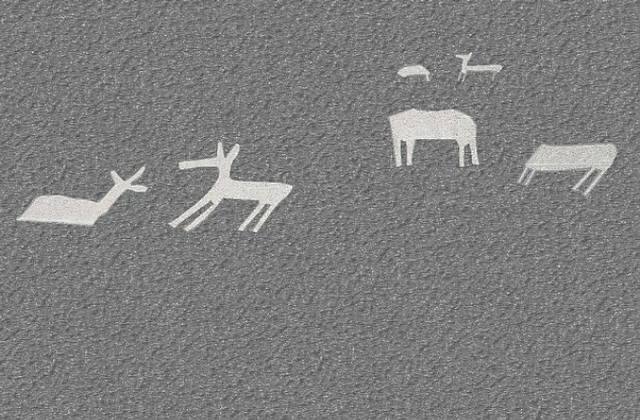After an amazing journey, a grain from the asteroid Bennu will be brought to Diamond Light Source, the UK’s national synchrotron, for scientific measurements. The grain is from 100 milligrams of sample sent to the Natual History Museum (NHM) in London, a small fraction of the approximately 70 grams of Bennu rock and dust brought back by NASA’s OSIRIS-REx mission. It will be subject to intensive analysis at the Dual Imaging And Diffraction (DIAD) instrument in Diamond by Dr. Ashley King and his team from the NHM and other OSIRIS-REx collaborators at the Open, Oxford and Manchester Universities. …read more […]
|
|
||

A team of Japanese archaeologists discovered 24 new geoglyphs in Peru’s Nazca Desert, which could be among the oldest in this area according to researchers from the Yamagata University from Japan. Almost invisible on the surface, the images were obtained through 3-D scans conducted on the ground north of the city of Nazca. The Geometric shapes drawn on the desert floor were found a kilometer and a half north of the city of Nazca, the figures include a drawing of what appears to be a “llama” and other representations that are not so recognizable. According these lines would date back to the III …read more […] A new set of tools for astronomers and planetary explorers use interactive visual analytics and machine learning to reveal and contrast properties of objects in our galaxy. …read more […] A team of SETI Institute scientists has unveiled new insights into a cosmic mystery known as Fast Radio Bursts (FRBs). The discovery and detailed observation of the repeating FRB 20220912A, made at the SETI Institute’s refurbished Allen Telescope Array (ATA), shed light on the nature of these space signals. …read more […] Astrolabes serve two purposes. First, they are useful as an astronomical tool, especially for finding a ship’s latitude. But second, they are works of art in themselves. Besides having to be precise, many are beautiful. They are even seeing a resurgence in popularity as collectors lap up even those made by modern manufacturing processes because of their aesthetic appeal. …read more […] Engineers are working to resolve an issue with one of Voyager 1’s three onboard computers, called the flight data system (FDS). The spacecraft is receiving and executing commands sent from Earth; however, the FDS is not communicating properly with one of the probe’s subsystems, called the telecommunications unit (TMU). As a result, no science or engineering data is being sent back to Earth. …read more […] Brown dwarfs are sometimes called failed stars, since they form like stars through gravitational collapse, but never gain enough mass to ignite nuclear fusion. The smallest brown dwarfs can overlap in mass with giant planets. In a quest to find the smallest brown dwarf, astronomers using the NASA/ESA/CSA James Webb Space Telescope have found the new record-holder: an object weighing just three to four times the mass of Jupiter. …read more […] For the first time, researchers have shown that 3D-printed polymer-based micro-optics can withstand the heat and power levels that occur inside a laser. The advance enables inexpensive, compact, and stable laser sources that would be useful in a variety of applications, including the lidar systems used for autonomous vehicles. …read more […] Some of the same properties of light and optics that make the sky blue and cause rainbows can also help scientists unlock mysteries about cloud formation and the effects of tiny particles in our air. …read more […] Liquid crystal is a state of matter that exhibits properties of both liquid and solid. It can flow like a liquid, while its constituent molecules are aligned as in a solid. Liquid crystal is widely used nowadays, for example, as a core element of LCD devices. …read more […] The year’s best meteor shower, the Geminids, peaks this week. Skygazers may see as many as one or even two a minute streaking across dark skies. …read more […] A multidisciplinary team of researchers from Skoltech has discovered the resonance frequencies of diatom frustules. These intricately structured silicon dioxide shells of single-celled microalgae provide a promising model for nature-inspired electronic and optical devices, such as tiny ultrasound detectors for advanced medical imaging and components for ultrafast signal processing in microchips of the future. …read more […] Did you know that when a group of robots or bacteria moves in a space where there are several free objects, they deflect these objects so they can pass? An international research team managed to show that the trail left by this movement contributes to the formation of groups, functioning as an effective communication mechanism between them, in a study now published in Nature Communications. …read more […] A NASA study expands the search for life beyond our solar system by indicating that 17 exoplanets (worlds outside our solar system) could have oceans of liquid water, an essential ingredient for life, beneath icy shells. Water from these oceans could occasionally erupt through the ice crust as geysers. …read more […] Photolithography involves manipulating light to precisely etch features onto a surface, and is commonly used to fabricate computer chips and optical devices like lenses. But tiny deviations during the manufacturing process often cause these devices to fall short of their designers’ intentions. …read more […] |
||
|
Copyright © 2025 Paranormal News Network - All Rights Reserved Powered by WordPress & Atahualpa 124 queries. 0.486 seconds. |
||
